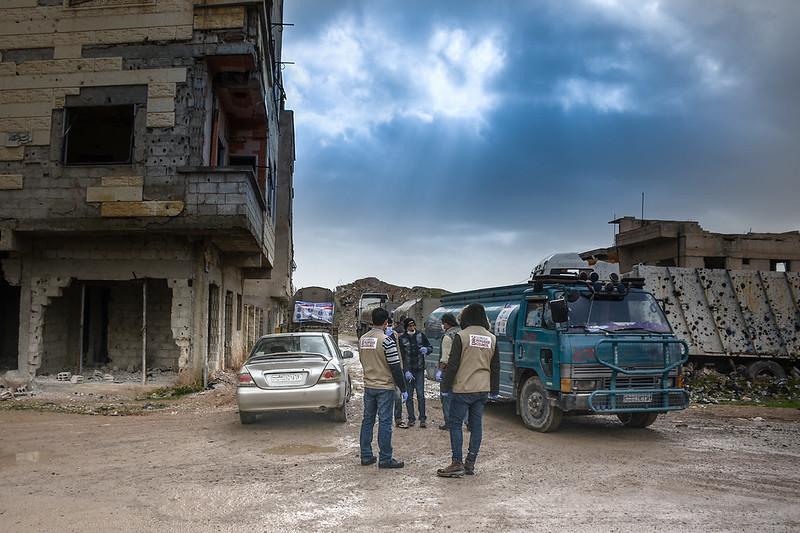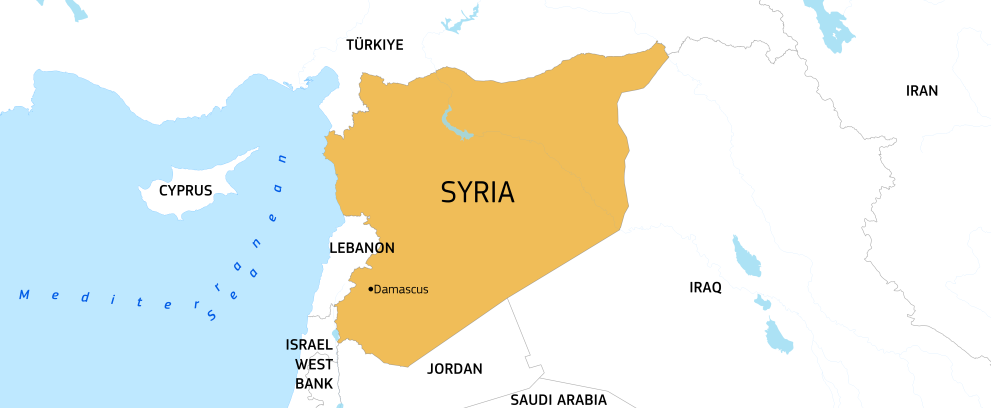Introduction
More than 13 years after the start of the Syria crisis, half the population is displaced, both inside and outside the country. Humanitarian needs in Syria are now at an all-time high.
7 out of 10 Syrians require humanitarian assistance. They have been confronted with the impact of conflict, displacement, the COVID-19 pandemic, epidemics, and a devastating earthquake.
As the leading donor of humanitarian aid to Syrians, the EU and its Member States have provided sustained humanitarian funding since the start of the conflict.
What are the needs?
13 years of conflict in Syria resulted in mass displacement, widespread poverty and destruction, an economic recession, and the spread of preventable diseases. The number of people in need of assistance has been steadily rising since 2012, reaching an unprecedented 16.7 million people in 2024, while 90% of the population lives below the poverty line.
In 2023 and 2024, Northern Syria has experienced an increasing level of hostilities and violations of International Humanitarian Law not seen since 2020, which led to further displacement and suffering and destruction of basic services and infrastructure.

According to the 2024 humanitarian needs overview:
- 90% of the Syrian population lives below the poverty line
- more than half the population lacks a stable source of water
- over 12.9 million people are food insecure
- more than 2 million internally displaced people live in camps and informal settlements, 85% of which is reportedly unable to meet basic needs
- 2.4 million children are out of school
Additionally, close to 5.2 million registered Syrian refugees live in the region, mostly in Türkiye, Lebanon, and Jordan.

How are we helping?
Despite many challenges, the EU has continued to provide impartial humanitarian aid to those in need across Syria since 2011. The EU, along with its Member States, is the largest donor to the Syria crisis.
Over the past 13 years, the EU and its Member States has mobilised more than €33 billion in humanitarian, development, economic and stabilisation assistance. It has supported Syrians both inside the country and across the region.
This includes more than €4 billion in humanitarian aid to Syrians and vulnerable host communities inside Syria and the region, including close to €1.6 billion for Syria alone. Since 2017, the EU also organises a yearly Brussels conference to support the future of Syria and the region to encourage pledges.
Latest EU humanitarian assistance
In 2023, the European Commission allocated close to €190 million in humanitarian aid to assist millions of people inside Syria.
This past year, the EU has regularly earmarked humanitarian funding to respond to emergencies including the February 2023 earthquakes, as well as to address health needs and the rising food insecurity inside Syria.
In response to the earthquakes, the EU humanitarian partners on the ground:
- conducted search and rescue operations
- provided tents, blankets, hygiene, cooking and other essential household items to the affected people
- supplied health facilities with medicines

The EU also sent supplies from the European Humanitarian Response Capacity warehouses in Brindisi and Dubai. The aim was to support the aid efforts throughout the country.
In addition to humanitarian assistance, the EU Civil Protection Mechanism was activated 2 days after the 6 February earthquake. Relief from 16 European countries was trucked in via Lebanon and Türkiye to government and non-government-controlled areas.
Overall support
EU humanitarian aid in Syria focuses on addressing critical needs. It also promotes sustainable life-saving assistance and humanitarian early recovery by improving access to basic services for an increasingly deprived population.
The assistance is channelled through our humanitarian partners. They provide the most vulnerable with health care, food assistance, water, sanitation and hygiene services, protection, shelter, and education.
The EU closely cooperates with all its humanitarian partners across the country: NGOs, UN agencies and the International Red Cross and Red Crescent movement. They adhere to the humanitarian principles of humanity, neutrality, impartiality and independence.
The EU has repeatedly called for the respect of international humanitarian law. It continuously urges parties to the conflict to allow unimpeded, safe and continued humanitarian access to people in need.
The EU also fund humanitarian aid in countries across the region – Türkiye, Lebanon, Jordan, Iraq and Egypt – which host around 5.2 million registered Syrian refugees together.
Last updated: 26/04/2024
Facts & figures
16.7 million people in need in 2024.
More than 7.2 million internally displaced.
Close to 5.2 million registered Syrian refugees in the region, including:
- Over 3.1 million in Türkiye
- Close to 790,000 in Lebanon
- Close to 640,000 in Jordan
(Source: UNHCR – April 2024)
EU humanitarian funding inside Syria:
€186.5 million in 2023
Total assistance by the EU and its Member States to the Syria crisis:
more than €33.3 billion since 2011.

